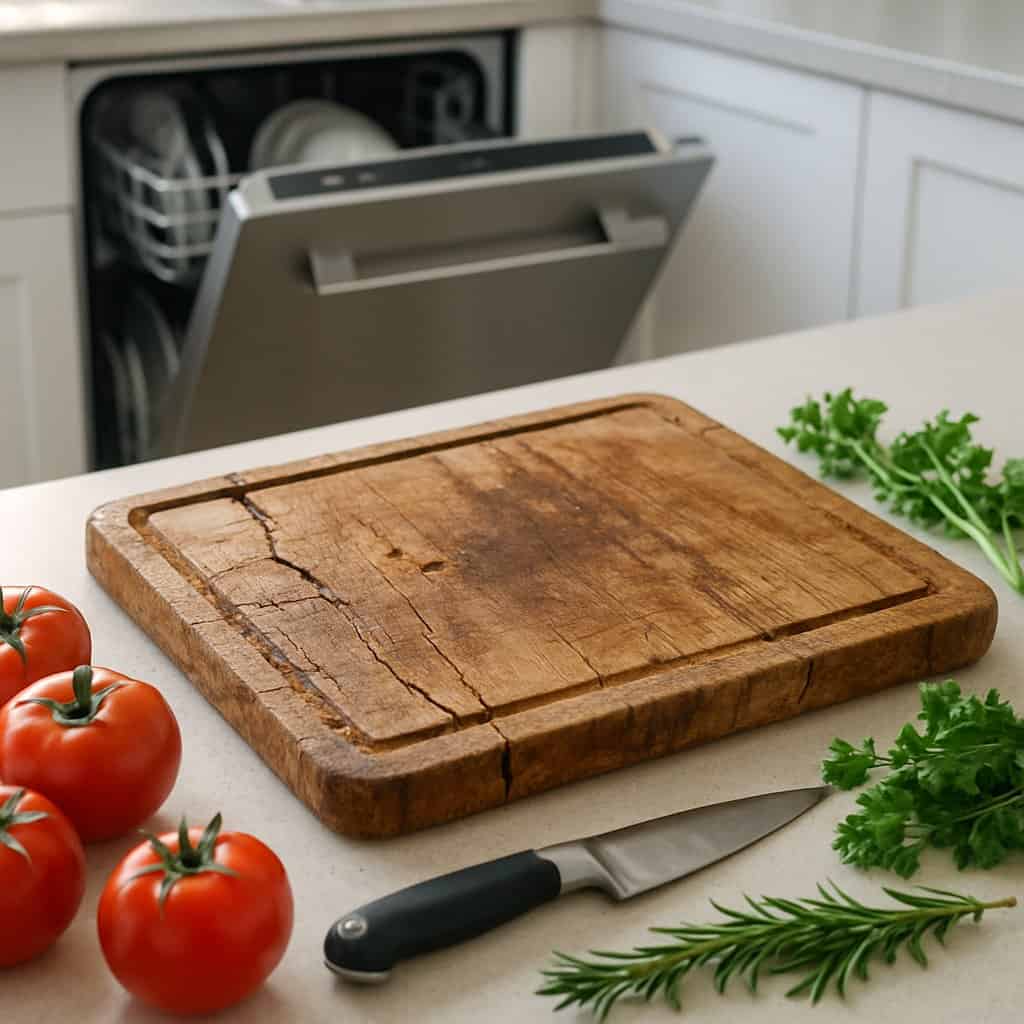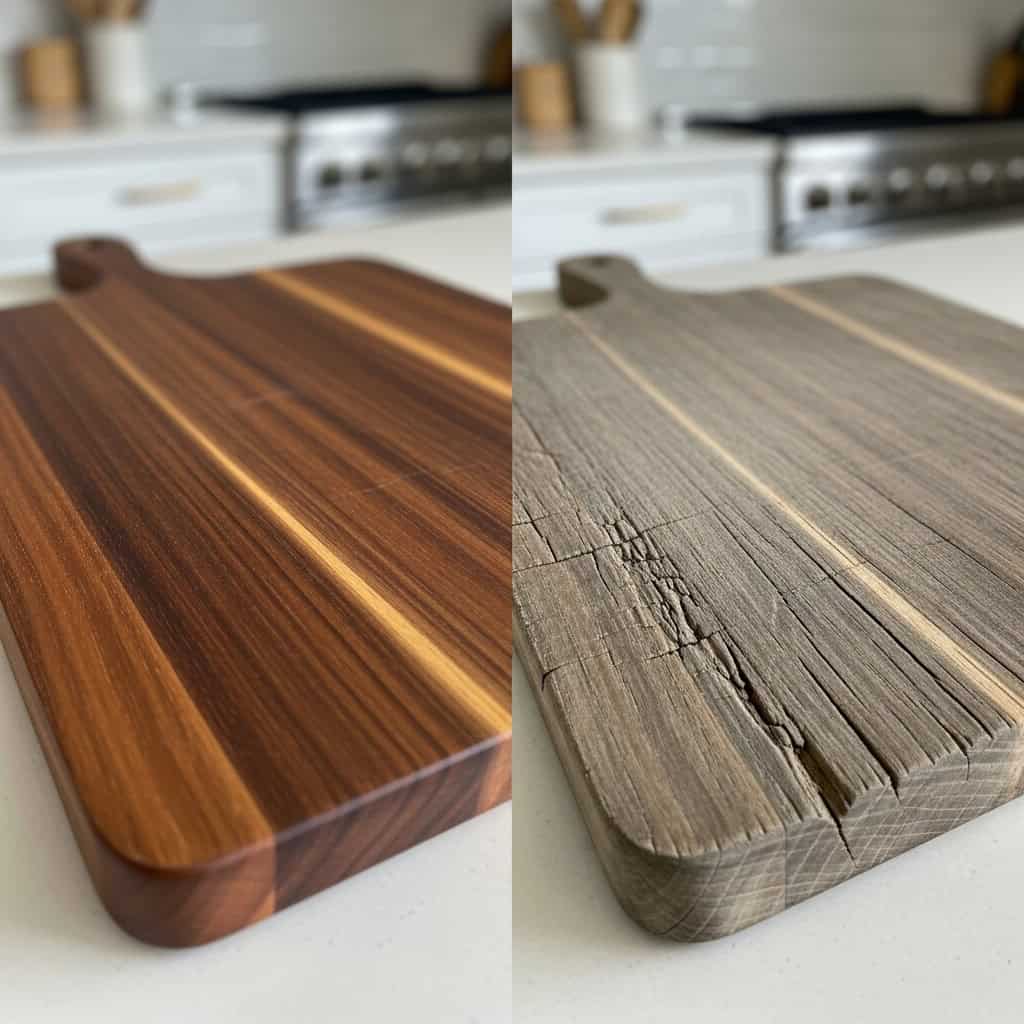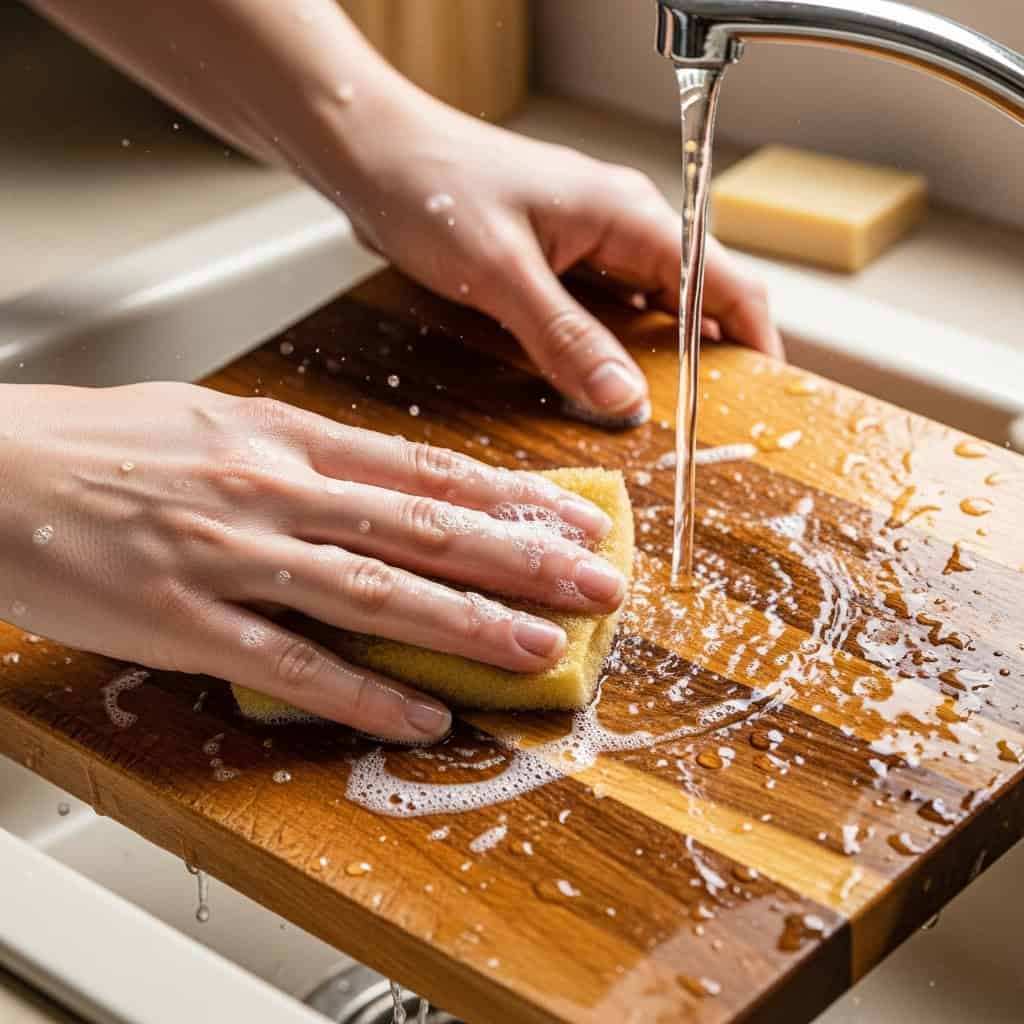If you’ve been tossing your wooden cutting board into the dishwasher along with your plates and cups, you need to stop immediately.
While it might seem like the easiest way to get your board clean, you’re actually destroying it.
Here’s exactly what happens when wood meets your dishwasher’s harsh environment.
1. Heat and Water Cause Severe Warping

Wood is a natural, porous material that expands when it absorbs water and contracts as it dries.
Your dishwasher creates the perfect storm of prolonged heat (140-160°F) and moisture that forces wood fibers to swell dramatically, then shrink rapidly during the drying cycle.
This constant expansion and contraction causes your once-flat cutting board to warp into an unusable curved shape.
A warped board rocks on your counter, making it dangerous to use and nearly impossible to cut on safely.
Even worse, the warping is permanent—once your board is warped, there’s no going back.
2. Temperature Changes Create Dangerous Cracks

The abrupt temperature changes in your dishwasher—from room temperature to scalding hot, then back to cool—put tremendous stress on wood fibers.
This thermal shock causes the wood to crack and split, often along the grain lines.
These cracks aren’t just cosmetic damage.
They create deep crevices where food particles get trapped and bacteria can multiply.
What started as a cleaning method actually creates the perfect breeding ground for the harmful microorganisms you’re trying to eliminate.
3. Harsh Detergents Strip Away Protective Oils

Dishwasher detergents are formulated to cut through grease and sanitize dishes using powerful chemicals and enzymes.
While this works great for your plates, these same harsh detergents strip away the natural oils and any protective treatments from your wooden cutting board.
Without these protective oils, the wood becomes dry, brittle, and more susceptible to damage.
The detergents can also discolor your beautiful wood, turning it gray or leaving permanent stains that ruin its appearance.
4. Extended Water Exposure Promotes Bacterial Growth

A typical dishwasher cycle can last 1-3 hours, during which your wooden cutting board is constantly exposed to hot, humid conditions.
Wood naturally absorbs this moisture, creating an environment where bacteria, mold, and other microorganisms thrive.
Unlike plastic cutting boards that can handle this extended moisture, wood needs to dry quickly after cleaning to prevent bacterial growth.
The prolonged wet environment in your dishwasher does exactly the opposite of what your wooden board needs for food safety.
5. The Wood Structure Becomes Permanently Damaged

Repeated dishwasher cycles break down the cellular structure of the wood itself.
The combination of heat, moisture, and chemicals causes the wood fibers to separate and become brittle.
This makes your cutting board more prone to splintering, which can contaminate your food with wood particles.
Once the wood structure is compromised, your cutting board becomes increasingly difficult to clean properly, as bacteria can penetrate deeper into the damaged wood fibers.
6. You’ll Ruin an Expensive Investment

Quality wooden cutting boards can cost $50-$200 or more, and with proper care, they should last decades.
Many manufacturers specifically void warranties on boards that have been put through the dishwasher because the damage is so predictable and severe.
A single trip through your dishwasher can turn a beautiful, functional cutting board into warped, cracked, bacteria-harboring trash.
It’s an expensive mistake that’s completely avoidable.
The Right Way to Clean Your Wooden Cutting Board

Cleaning your wooden cutting board properly takes just 2 minutes:
- Rinse immediately after use with warm water
- Scrub with hot, soapy water using a sponge or brush
- Rinse thoroughly and dry completely with a clean towel
- Stand upright to air dry completely
- Oil monthly with food-grade mineral oil to maintain the wood
For extra sanitization after cutting raw meat, wipe with a diluted bleach solution (1 tablespoon per gallon of water) or white vinegar, then rinse and dry thoroughly.
Bottom Line
Your dishwasher might clean your dishes perfectly, but it’s the enemy of wooden cutting boards.
The heat, moisture, harsh chemicals, and extended exposure time create the perfect conditions to destroy your board and create food safety hazards.
Stick to hand washing—your cutting board (and your wallet) will thank you.
A well-maintained wooden cutting board can be a kitchen companion for life, but only if you keep it far away from your dishwasher./isolated-segment.html
